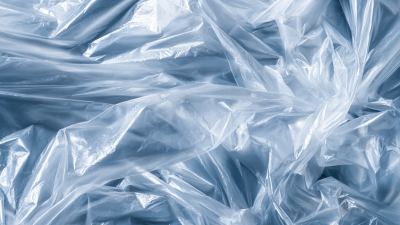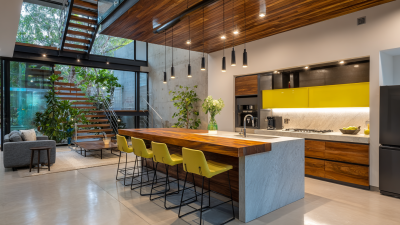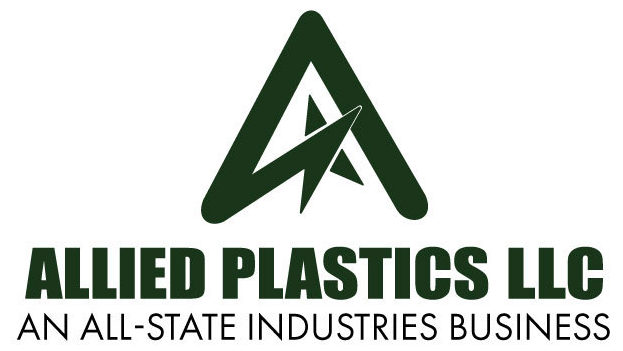In the evolving landscape of packaging materials, polypropylene plastic emerges as a frontrunner for eco-friendly solutions. As businesses and consumers alike seek sustainable alternatives, experts have begun to recognize the remarkable versatility and potential of this plastic. Dr. Emily Thompson, a leading authority in polymer science, asserts, “Polypropylene plastic is not just a material; it’s a sustainable solution that can revolutionize the packaging industry.”

This statement encapsulates the growing consensus among industry leaders that polypropylene plastic is set to define the future of packaging. Its lightweight nature, durability, and ability to be recycled contribute to its appeal for manufacturers striving to minimize environmental impact. With innovative techniques being developed to enhance its eco-friendliness, polypropylene plastic stands out as a key player in the quest for sustainable materials.
As we delve deeper into the multifaceted applications of polypropylene plastic, it becomes clear that its use in packaging is not merely a trend, but rather a significant step towards a more sustainable future. By exploring its properties and diverse applications, we can better understand how polypropylene plastic can lead the charge in transforming the packaging industry for the better.
Polypropylene (PP) is rapidly gaining prominence in the packaging industry due to its unique properties that cater to sustainability without compromising on performance. As an ideal material for packaging, polypropylene showcases excellent thermal stability, outstanding chemical resistance, and impressive mechanical strength. These characteristics make PP an excellent choice for various applications, especially in food packaging, where preserving quality and extending shelf life are critical.
Tips for using polypropylene in packaging include ensuring proper heat treatment during production to enhance film morphology. This not only improves the mechanical properties of biaxially oriented polypropylene (BOPP) films but also optimizes their gas barrier capabilities, which is essential for maintaining food freshness. Furthermore, brands looking to innovate can explore the integration of biodegradable films to further contribute to a reduction in plastic waste, providing an eco-friendly alternative for perishable food items.
As the industry continues to evolve, adopting materials like polypropylene will be instrumental in advancing sustainable packaging solutions. Emphasizing properties such as hydrophobic nature and exceptional clarity can further enhance consumer appeal while supporting environmental goals.
This chart illustrates the percentage usage of different types of packaging materials over the past five years, highlighting the growing trend towards polypropylene plastic as a preferred choice for eco-friendly packaging solutions.
Polypropylene (PP) is emerging as a frontrunner in the eco-friendly packaging landscape, largely due to its lower environmental impact compared to other plastics. According to the Plastic Industry Association, polypropylene generates 50% less greenhouse gas emissions during production than polyethylene terephthalate (PET). This significant reduction is attributed to polypropylene's simpler manufacturing process, which requires less energy and fewer raw materials. Additionally, PP has a recycling rate of about 30%, which, while needing improvement, is comparatively better than other common plastics like polystyrene, which has a recycling rate close to 0%.
Furthermore, the versatility and durability of polypropylene make it an ideal candidate for sustainable packaging solutions. A study from the European Bioplastics Association suggests that PP can be recycled indefinitely without loss of quality, positioning it as a long-term material choice for brands aiming to minimize their environmental footprint. Recent surveys indicate that 62% of consumers are willing to pay more for products with sustainable packaging, indicating a shift in market preferences that favors materials like polypropylene. As companies increasingly prioritize eco-conscious choices, polypropylene stands out not only for its performance but also for its potential to reduce the overall plastic pollution crisis.
Polypropylene, a versatile plastic known for its eco-friendly properties, is witnessing significant growth in various industrial applications, particularly in packaging solutions. The bio-based polypropylene market is projected to reach USD 1,160.28 million by 2029, fueled by increasing demand for sustainable materials. This growth is primarily driven by advancements in production methodologies that utilize renewable feedstocks such as sugarcane, corn starch, cellulose, and lignocellulosic biomass, which contribute to a more sustainable and circular economy.
The Asia Pacific region is expected to experience remarkable expansion in the bio-based polypropylene market, estimated to reach USD 357.67 million by 2025. As industries pivot towards greener practices, the demand for polypropylene corrugated packaging is also on the rise, with projections indicating a market worth USD 42.20 billion by 2034. Overall, the polypropylene landscape is evolving, with increasing investments in recycled polypropylene solutions, which are anticipated to grow at a CAGR of 6.7% from 2025, underscoring the material's pivotal role in shaping the future of eco-friendly packaging.
| Application | Advantages | Eco-Friendly Features | Typical Use Cases |
|---|---|---|---|
| Food Packaging | Lightweight, durable, moisture-resistant | Recyclable, reduced carbon footprint | Containers, wrappers, takeout boxes |
| Beverage Bottles | Strong impact resistance, chemical resistance | Recyclable, lower energy consumption in production | Non-carbonated drinks, edible oil containers |
| Industrial Packaging | Sturdy, customizable, resistant to chemicals | Easily recyclable, less waste generation | Pallet wraps, bulk bags, containers for chemicals |
| Personal Care Products | Versatile design options, lightweight | Biodegradable options available, recyclable | Cosmetic tubes, lotion bottles, shampoo containers |
| Healthcare Packaging | Hygienic, chemical resistance | Recyclable, less plastic waste in health sector | Pharmaceutical bottles, medical device packaging |
Polypropylene plastic is gaining attention for its versatility and sustainability in product design. As a lightweight and durable material, polypropylene is not only suitable for traditional packaging but also opens doors to innovative sustainable applications. This adaptability makes it a favorable choice among manufacturers aiming to meet eco-friendly standards while enhancing product performance.
In the context of frozen food packaging, polypropylene offers excellent moisture resistance and thermal stability, which are essential for maintaining the quality of frozen goods. Its recyclability further supports the shift towards sustainable packaging solutions, aligning with increasing consumer demands for eco-friendly products.
Tips: When considering polypropylene for your product design, focus on its ability to reduce overall weight and improve energy efficiency during transportation. Additionally, stay updated with the latest advancements in biodegradable additives that can enhance the environmental profile of your polypropylene applications, as this will resonate well with environmentally-conscious consumers. Another tip is to explore how polypropylene's customization possibilities can elevate your product's aesthetic appeal, making it stand out in a crowded market while still being sustainable.
The role of polypropylene (PP) in the circular economy is becoming increasingly significant, as the production and consumption of plastic are shifting towards more sustainable practices. According to a recent report by the "European Commission," the global recycled polypropylene market is projected to grow at a CAGR of 7.4%, reaching a market value of $13 billion by 2026. This surge is attributed to the increasing demand for eco-friendly materials that align with stricter regulations and consumer preferences for sustainable packaging solutions.
In addition to its recyclability, polypropylene offers a versatile platform for innovation in sustainable packaging. Advances in production technologies are enabling the development of "advanced recycling" methods, which can reclaim and convert waste polypropylene back into usable raw materials. The "Global Plastics Alliance" has reported that about 30% of plastic packaging can now be effectively recycled, with polypropylene standing out due to its lower carbon footprint and energy efficiency during production. The integration of PP into a circular economy not only reduces reliance on virgin materials but also fosters a more sustainable future, where plastic waste is reintroduced into the supply chain rather than ending up in landfills.






